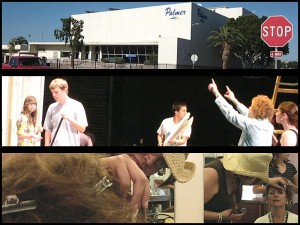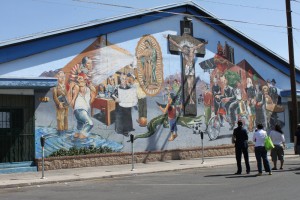The borderland changed forever after 9/11
|
EL PASO— The tragic attack on America that happened thousands of miles away 10 years ago rippled through the border region, tightening up security at the checkpoints that divide Ciudad Juárez, México from El Paso, Texas. Students, professors, and faculty at the University of Texas at El Paso (UTEP) gathered at a ceremony remembering and reflecting on the event on the 10th anniversary of 9/11. UTEP student Karina Lopez, who crosses the border often said that ever since that awful day the border checkpoints have been a hassle. “Traveling across the border became irrationally long. Security became so high and people became paranoid about crossing the border, when before it only took 15 minutes, now it takes up to three hours.”
Lopez says that in a sense, El Paso has changed since the 9/11 attacks.






